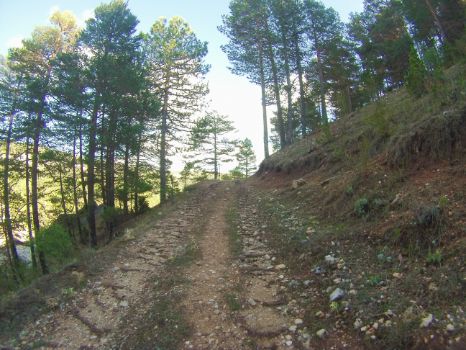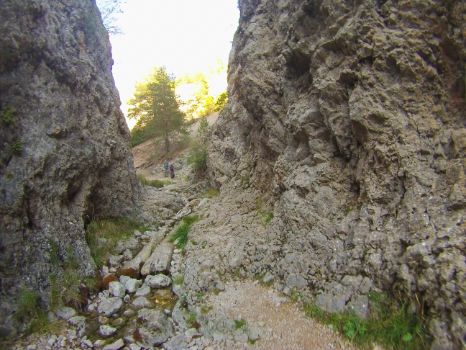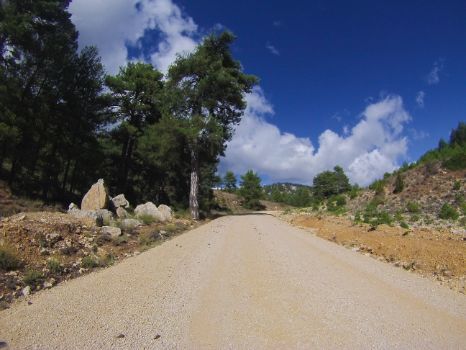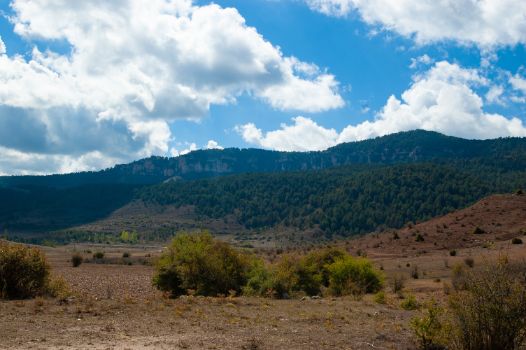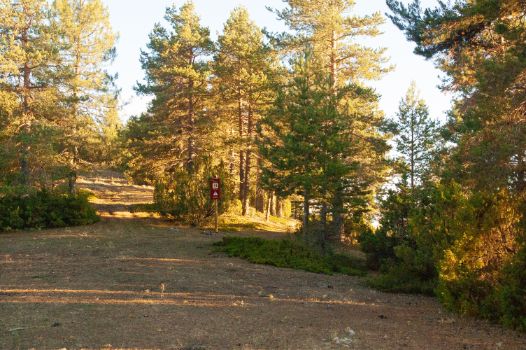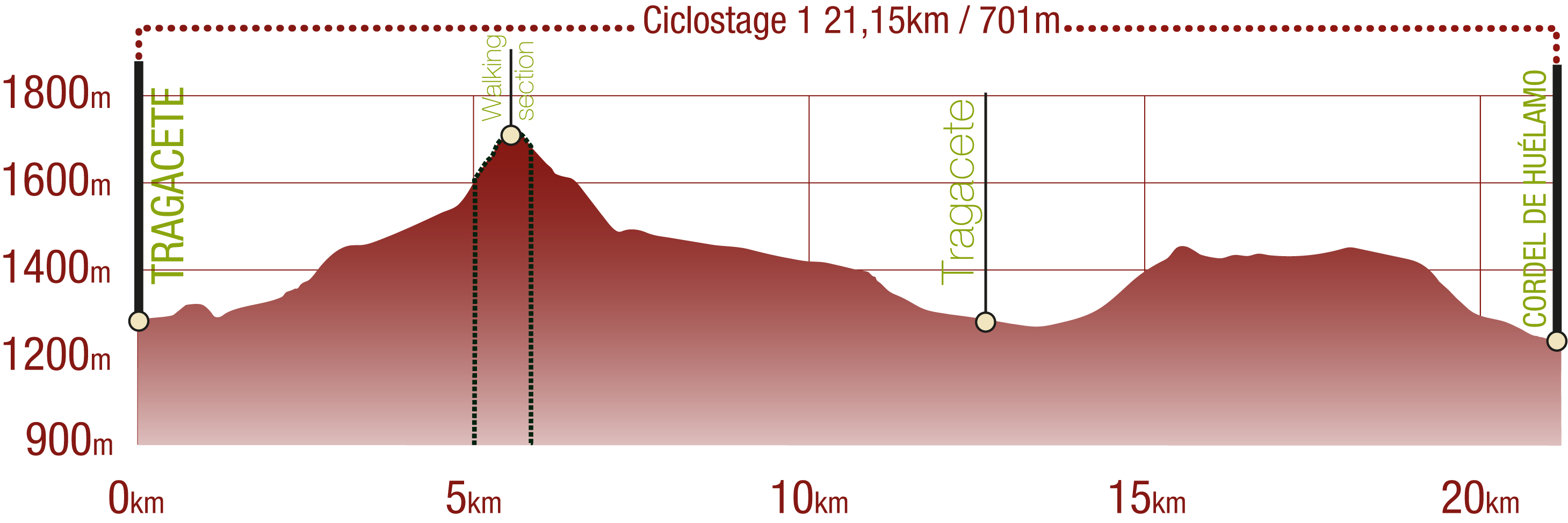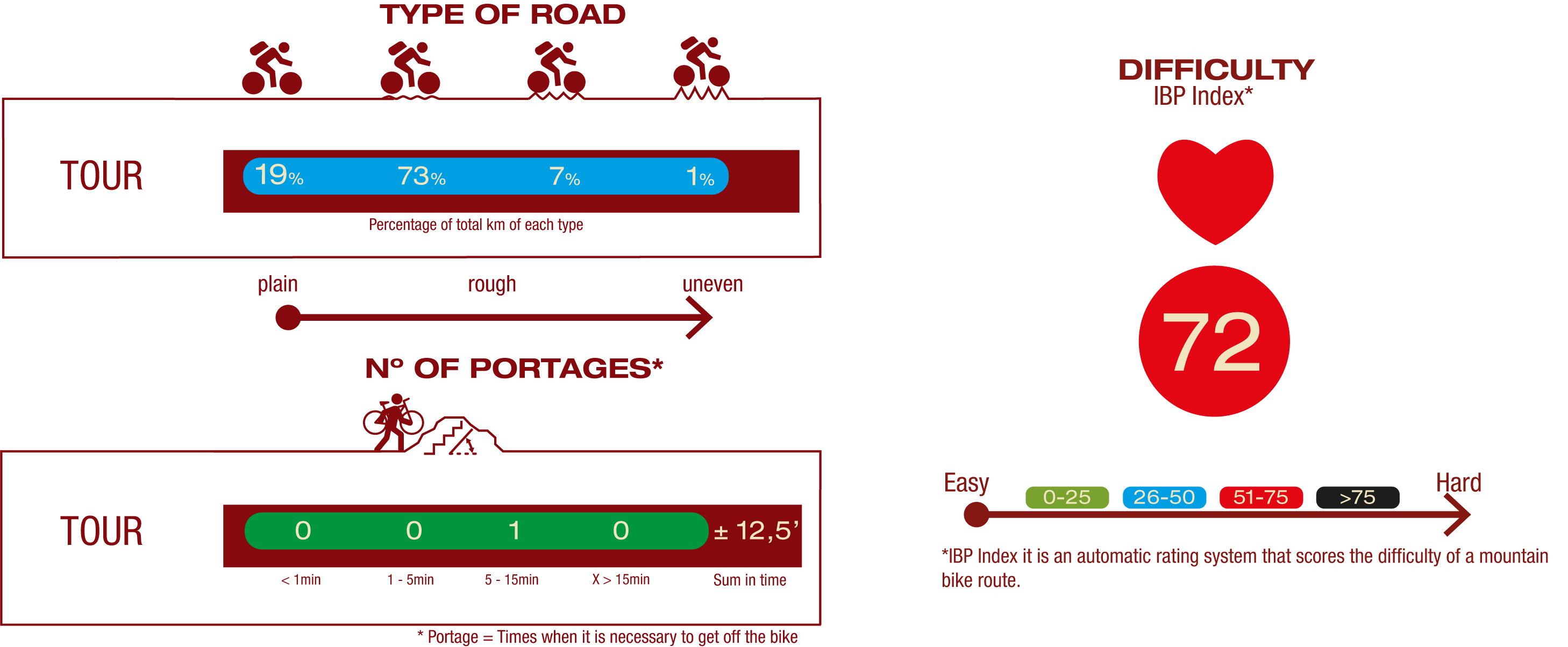
Net of Natural
Trails

Stage 1 Branch: Tragacete – Source of the River Júcar
Description
The source of the River Júcar is well worth a second visit
With its spectacular surroundings, the Júcar Nature Trail offers a new opportunity for travellers to enjoy it in all its splendour with a branch of the first stage that starts in the highland village of Tragacete and ends at the source of the River Júcar, plunging through the interior of the Serranía de Cuenca Natural Park.

The interpretative panel where the first stage ends also marks the start of this branch, which for the first few metres advances towards the town’s bullring, crossing the CM-2106 road, hence extreme caution is recommended.
Leaving the aforementioned bullring and the heliport on the right, and the municipal swimming pool to the left, you will leave the village under the watchful eye of some livestock farms.
The route continues through meadows used by the excellent cattle raised in these lands. The first ascent of this branch ends at the kilometre 1 marker, before immediately starting a short descent that ends at the Salado stream. A riverbed where the oldest residents of the village used to come to refresh themselves in summer.

After traversing another kilometre and a new stream, the meadows gradually give way to the laricio pine (Pinus nigra) and Scots pine (Pinus sylvestris).
The uphill slopes predominate in this section; some of them are steep enough to test the touring cyclist’s fitness. This physical effort will be rewarded by the beauty of these forest masses, which are well worth stopping to enjoy in detail, while recharging your batteries to continue on your way.

Continuing along a wide forest trail, you will reach a right turn and, soon thereafter, on the left, you will pass between both turns kilometre 4 of the route. Meanwhile, you will continue to ascend, enjoying a spectacular panoramic view of the sierra, which appears as a natural window amidst the leafy vegetation that surrounds the area.
Shortly after passing kilometre five and a challenging uphill slope, the Júcar Nature Trail turns right, leaving the wide track that has been used to this point, and starts a stretch of path on foot along a steeply-sloping path, as the signs indicate.

The hiker will ascend, albeit with some effort, the route that coincides with the Pequeño Recorrido PR-CU-79, and will see, besides the standard Caminos Naturales signposting, the yellow and white lines characteristic of this type of route.
After a little under 700 metres from the start of this walking section, you will reach a clearing known as the Garrafa pass, where you can catch your breath comforted by the unbeatable views.

After a well-deserved rest, the final descent starts on a broader, stony path. After passing kilometre 7, you will reach a left turn and then face the last exciting metres that will lead you to the longed-for source of the River Júcar in the El Infierno Narrows. This is a place where you can enjoy the beauty of the surroundings in peace and quiet, before returning to Tragacete by retracing your steps or following stage 1 of the Júcar Natural Trail.
Sites of interest
Puntos de interés
Hydrography
- Manantiales del Estrecho del Infierno
- Nacimiento del río Cuervo
- Nacimiento del río Júcar
- Arroyo Salado
Information
Municipality
Hostel
Profile
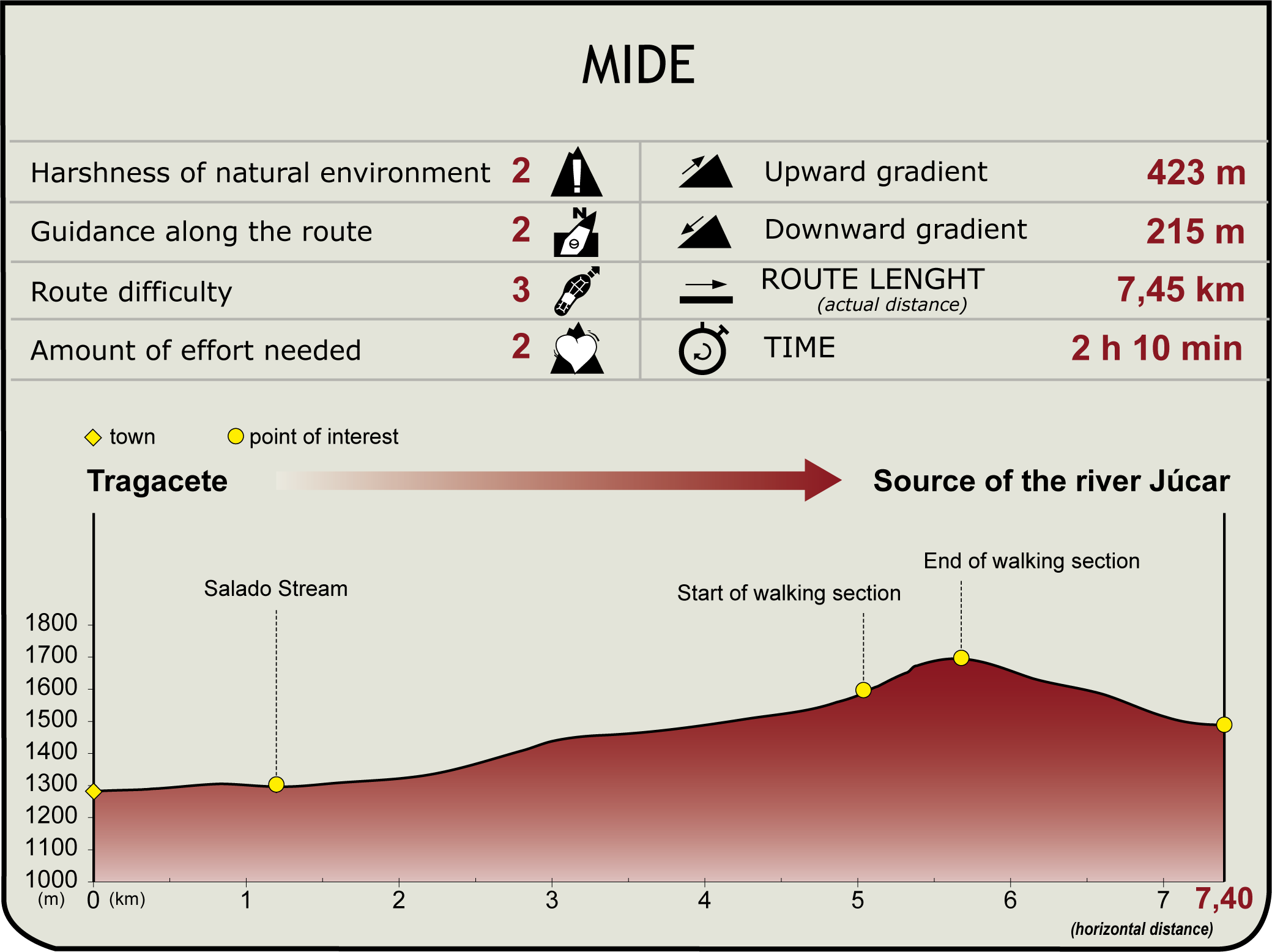
Highlights
Further information
Serrania de Cuenca Natural Park
Protected Natural Area declared a Natural Park on 8 March 2007. It has more a protected area covering more than 74,000 hectares, all of them in the province of Cuenca. The most representative forest masses are pine forests, in which three of the Iberian species coexist: the Scots pine (Pinus sylvestris), the laricio pine (Pinus nigra) and the resin pine (Pinus pinaster). These forests, along with those in the Alto Tajo Natural Park, are geographically united, forming a huge area that provides refuge and home to populations of many species of fauna such as red deer (Cervus elaphus) and fallow deer (Dama dama), whose autumn rutting season attracts numerous visitors.
No less representative are the geomorphologic formations caused by the mainly limestone rocks, which form buttes, canyons and gorges of unparalleled beauty.
Timber rafting on the River Júcar: the trade of the rafter
In the upper course of the River Júcar, and in many other rivers, the whole logs were transported along the course of the river until very recently; they are known as maderadas. The people responsible for guiding this river journey were rafters, whose work began on the banks of the river itself, where lumberjacks brought the whole logs to be transported. The basic tool they used for their work was the gancho, a pole made of hazel or juniper wood with an iron hook at one end. The organisation of these rafters was commanded by the great rafter or river master and was divided into three groups according to the rafters’ position with respect to the timber: vanguard, centre and rearguard. This now-extinct trade can still be seen in demonstrations held by various cultural and ethnographic groups in the area, which revive the harshness of people’s daily lives in the past.
Multimedia
Downloads
GPS Downloads
Documents
Cyclability
TYPE OF ROADS, PORTAGES & DIFFICULTY
SAFETY RECOMMENDATIONS
- Mountain stages for cyclists with a walking section between them of more than 3 kilometres.
- You must exercise extreme caution and carefully read all the information aimed at touring cyclists and you must abandon the trip if in doubt.
- There are portages on both cycle stages, path sections, sections with rocky outcrops, sections with loose stones, challenging climbs and long descents.
- They run through an area of great scenic value with the risks inherent in the Serranía de Cuenca.
GENERAL RECOMMENDATIONS
- Find out about the technical aspects of the route and the weather on the day.
- Take care of the environment. Take care not to disturb animals or damage vegetation. Respect private areas.
- You must give priority to pedestrians and comply with general traffic rules.
- The environment in which you will be riding is open, free to move around and an area where many activities are carried out (sporting, forestry, livestock and agricultural activities). Always have an understanding, prudent, responsible and respectful attitude.





